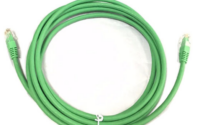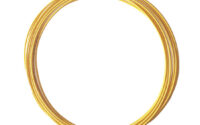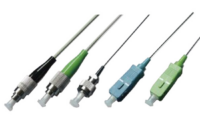How to Choose Between AOC and DAC?
When designing a high-performance network, choosing the right cabling solution is crucial for ensuring optimal performance, cost-efficiency, and scalability. Two popular options for short-range connections are Active Optical Cables (AOC) and Direct Attach Cables (DAC). This guide will help you understand the differences between AOC and DAC and make an informed decision based on your specific needs.
Understand the Basics
Before diving into the decision-making process, it’s important to understand the fundamental differences between AOC and DAC:
| Feature | AOC (Active Optical Cable) | DAC (Direct Attach Cable) |
|---|---|---|
| Technology | Uses optical fibers for data transmission | Uses copper cables for data transmission |
| Transmission Range | Longer (up to 100 meters or more) | Shorter (up to 7 meters for passive DAC) |
| Power Consumption | Higher (requires active components) | Lower (passive DAC requires no power) |
| Cost | Higher | Lower |
| Weight and Flexibility | Lightweight and flexible | Heavier and less flexible |
| EMI Sensitivity | Immune to electromagnetic interference (EMI) | Susceptible to EMI |
Cost Higher Lower
Weight and Flexibility Lightweight and flexible Heavier and less flexible
EMI Sensitivity Immune to electromagnetic interference (EMI) Susceptible to EMI
Evaluate Your Use Case
The choice between AOC and DAC largely depends on your specific use case and performance requirements.
Choose AOC if:
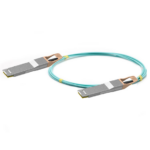
You need longer transmission distances (up to 100 meters or more).
Your environment is prone to electromagnetic interference (EMI).
You require lightweight and flexible cabling for easier cable management.
Your application demands high bandwidth and low latency over longer distances.
Choose DAC if:
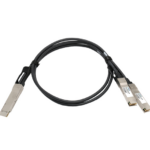 You need short-range connections (up to 7 meters for passive DAC).
You need short-range connections (up to 7 meters for passive DAC).
Your priority is cost-efficiency for short-distance links.
Your environment has minimal EMI concerns.
You prefer a simple and reliable solution for rack-to-rack or device-to-device connections.
Consider Performance Requirements
Transmission Distance
AOC: Ideal for distances beyond 7 meters, up to 100 meters or more.
DAC: Suitable for short distances (up to 7 meters for passive DAC, up to 15 meters for active DAC).
Bandwidth and Latency
DAC support high bandwidth (e.g., DAC-10G–50G–100G–200G–400G–800G).
AOC is better for longer distances where signal integrity is critical.(e.g., AOC-10G–56G–100G–200G–400G–800G)
EMI Sensitivity
AOC: Immune to EMI, making it ideal for environments with high electromagnetic noise.
DAC: Susceptible to EMI, which can affect performance in noisy environments.
Budget and Total Cost of Ownership (TCO)
AOC:Higher upfront cost due to active optical components. Lower long-term costs in environments requiring longer distances or EMI immunity.
DAC:Lower upfront cost, especially for passive DAC. Higher long-term costs if EMI issues arise or if longer distances are needed.
Future-Proofing and Scalability
AOC:Better suited for future-proofing due to its longer range and EMI immunity. Ideal for environments expecting growth or changes in network topology.
DAC:Cost-effective for current short-range needs but may require upgrades for future scalability.
Ecosystem and Compatibility
AOC:Compatible with a wide range of high-speed networking equipment. Requires careful handling due to the use of optical fibers.
DAC:Universally supported by networking devices for short-range connections. Easier to deploy and manage in rack-to-rack or device-to-device scenarios.
In Conclusion
By carefully evaluating your requirements, you can select the cabling solution that best aligns with your network goals and ensures optimal performance for your applications.
Explore more: For more information on fiber optic Cable and related products, visit TARLUZ.com or contact our experts for personalized advice.
